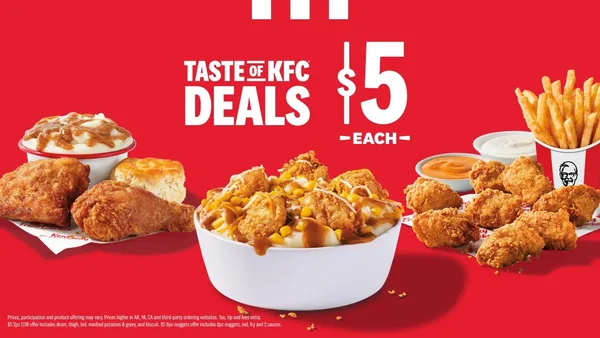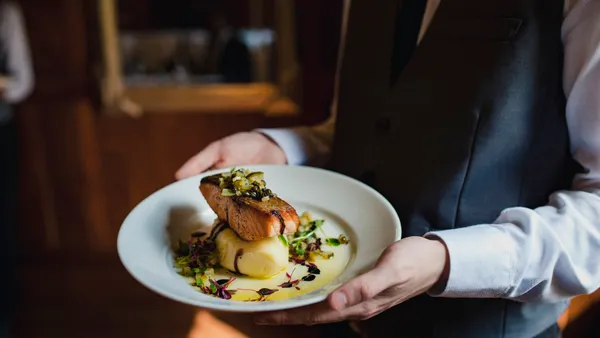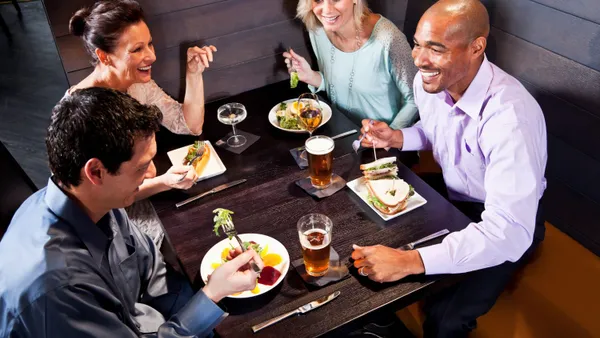Dive Brief:
- Postmates has been tapped by Sweetfin to be the exclusive delivery partner of the poke concept. Delivery fees start at $1.99, according to QSR Magazine.
- Sweetfin currently has 10 locations in Southern California, with plans to expand this year.
- Dan Mosher, SVP and merchant lead at Postmates, said poke — a Hawaiian dish that features raw, marinated fish usually served in a bowl over rice — is one of Postmates' top items ordered in Southern California.
Dive Insight:
Postmates isn't the only company experiencing a strong demand for poke delivery. Grubhub's 2018 year in food report also shows that poke deliveries increased 205% year-over-year and was the second most popular food ordered on the platform last year. In 2017, poke bowls were the most popular delivery food and experienced a 643% rise in popularity.
Similarly, sushi is also a heavily requested delivery option — the most popular delivery item in three states.
The trajectory of poke's growth isn't expected to slow anytime soon. According to the Global Poke Foods Market 2019-2023 report, the dish is expected to grow at a CAGR of about 23% through the next four years. Drivers include new vendors offering poke — including Sweetfin and competitors like Pokeworks, Mainland Poke, Poke Bros. and Aloha Poke Co. Sushi is also expected to grow at a solid 5% annually through 2022, according to Technavio.
These statistics illustrate that Sweetfin’s move to add a delivery partnership should pay off as demand for delivery also rises. McKinsey & Company estimates that the global online food delivery market will grow by about 15% annually each year until 2020.
However, there are food safety risks involved in delivering raw fish dishes like poke and sushi. If kept at the wrong temperature, raw fish could breed bacteria. In fact, Dan Scalco, founder of meal delivery review site FoodBoxHQ, told Business Insider that any type of seafood/shellfish would be his top pick to avoid for delivery because of the spoilage factor. Delivery companies can perhaps overcome this by keeping a smaller radius for these types of concepts to ensure a quicker delivery timeframe. There are some heating/cooler conversion vehicles making their way onto the market to ensure proper temperature control, but they haven't made their way into the aggregate space and could be cost prohibitive for restaurants. Still, nothing is as costly as a food safety issue and, should one arise, customers are more likely to place the blame squarely on the restaurant brand versus the delivery aggregate.
As the poke segment continues to grow, those concepts will have to ensure consistently safe delivery to keep up and compete with the rest of the industry.














